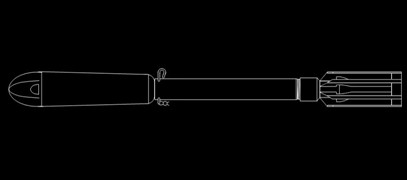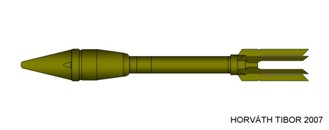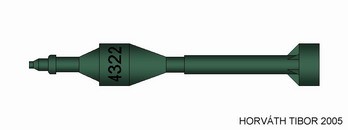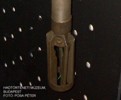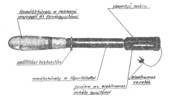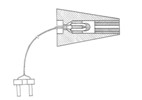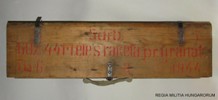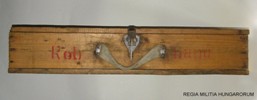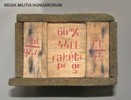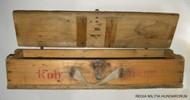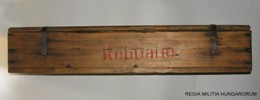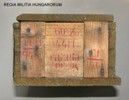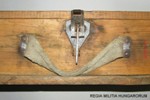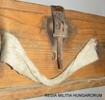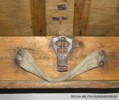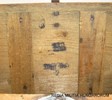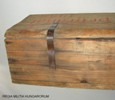Hungarian hybrid of bazooka and panzerschreck
17 August '15
By the middle of World War II, a kind of “division of labor” had developed among the states of the anti-Hitler coalition in the European theater of operations: the USSR “sucked” the lion’s share of the land war, Britain specialized in naval warfare, and the United States performed the function of industrial support for military operations, helping the economies of the directly fighting countries with weapons, military equipment and strategic materials. Of course, such a model is very primitive, but, nevertheless, up to the Normandy operation, it can describe the relations between the Allied powers in Europe with a sufficient degree of conventionality.
In the camp of the Axis countries and their allies, the situation was fundamentally different. Germany had the most powerful economy (and captured many industrialized regions of Europe - the Czech Republic, Upper Silesia, Austria, Belgium, the Netherlands, Northern France) and at the same time carried out its main operations both on land and at sea. In such conditions, its satellites from among the Eastern European states received German weapons (if they received them at all) on a residual basis, and usually of obsolete models.
Strange as it may seem, the relatively weak industry of these small countries (Finland, Romania and especially Hungary), which fell into the orbit of German geopolitical interests, turned out to be able to create and organize the production of quite interesting and effective types of weapons, from small arms to armored vehicles and aircraft inclusive.
As for the anti-tank weapons of infantry units, everything was very dull even in Germany until the end of 1943. Here is the opinion of an officer of the German General Staff during the war, Eike Middeldorf, on this matter:
"Anti-tank defense is, without a doubt, the saddest chapter in the history of the German infantry… Apparently, it will remain completely unknown why during the two years from the appearance of the T-34 tank in June 1941 to November 1943, no acceptable anti-tank infantry weapon was created.
Therefore, when in 1942, on the basis of the American Bazooka that fell into their hands, the Germans nevertheless created the 88-mm grenade launchers “Ofenrohr” (translated from German as “chimney”) and “Panzerschreck” (“terror of the tank”), there was no mass supply of these anti-tank weapons to the armies of the satellites. The German infantry, faced with an ever-increasing number of well-armored Soviet tanks, had no problem “mastering” all the grenade launchers produced by German industry. Of course, something fell to the Allied armies, but the priority for the Germans was supplies for their army. In 1943, the Germans were able to transfer only samples of the Panzerschreck to the Allies (Hungarians), and by the fall of 1944, a limited number of grenade launchers were received by the combat units of the 1st Hungarian Army.
The Hungarians did not want to put up with such discrimination - new and at the same time inexpensive weapons (the Panzerschreck cost only 70 Reichsmarks) qualitatively improved infantry units on the battlefield, allowing the image of the invincibility of the tank compared to the infantry to be buried forever. Hungarian designers began work on their own grenade launcher quite late, when the Panzerschrecks were already massively entering the German troops. The result of their work was a good hand-held anti-tank weapon, which combined the features of the Bazooka and Panzerschreck. The 44.M grenade launcher borrowed the handles and shield from its German counterpart, but the Hungarians chose the “American” caliber - 60 mm.
Hungarian anti-tank crew with a 44.M grenade launcher (with the shield removed)http://albumwar2.com/wp-content/uploads/2013/12/38697.jpg
Thanks to the smaller caliber, the Hungarian brother of the Panzerschreck turned out to be a little less bulky - its weight (with a shield) was 10.7 kg against 11.25 kg for the “German”. The difference in weight became more significant after the soldier’s “upgrade” with the removal of the shield. In addition, the choice of a smaller caliber for the hand-held anti-tank grenade launcher was due to considerations of the rate of fire - a lighter grenade could be easier (and faster) to reload.
Hungarian Honveds with grenade launchers 44.Mhttp://second-world-war-hu.webnode.hu
The rocket-propelled grenade weighing 2.55 kg had a muzzle velocity of 80 m/s. The maximum firing range of 600 meters was declared for the grenade launcher, but in practice the effective range was about the same as that of the Panzerschreck - about 150 meters. The armor penetration of the grenade was 100 mm, which made it possible to confidently hit Soviet light and medium tanks in any projection, and heavy tanks (IS-2) in the side and rear. The cumulative warhead of the grenade consisted of a steel body filled with TNT, the detonation was carried out from the impact when hitting the target. The jet engine body and stabilizing tail (6 blades) were made of zinc-aluminum alloy. Ignition of the powder charge during the shot took place using an electric detonator.
Appearance of the 44.Mgrenade http://militiahungarorum.roncskutatas.hu
The 44.M grenade launcher entered service with the Hungarian army too late and could not significantly affect the course of the war. Hungarian industry in the difficult conditions of 1944 was unable to establish its mass production, and the 44.M was rarely used in combat. Nevertheless, it remained captured in video footage showing the preparation of Hungarian youth for the defense of Budapest in December 1944:



